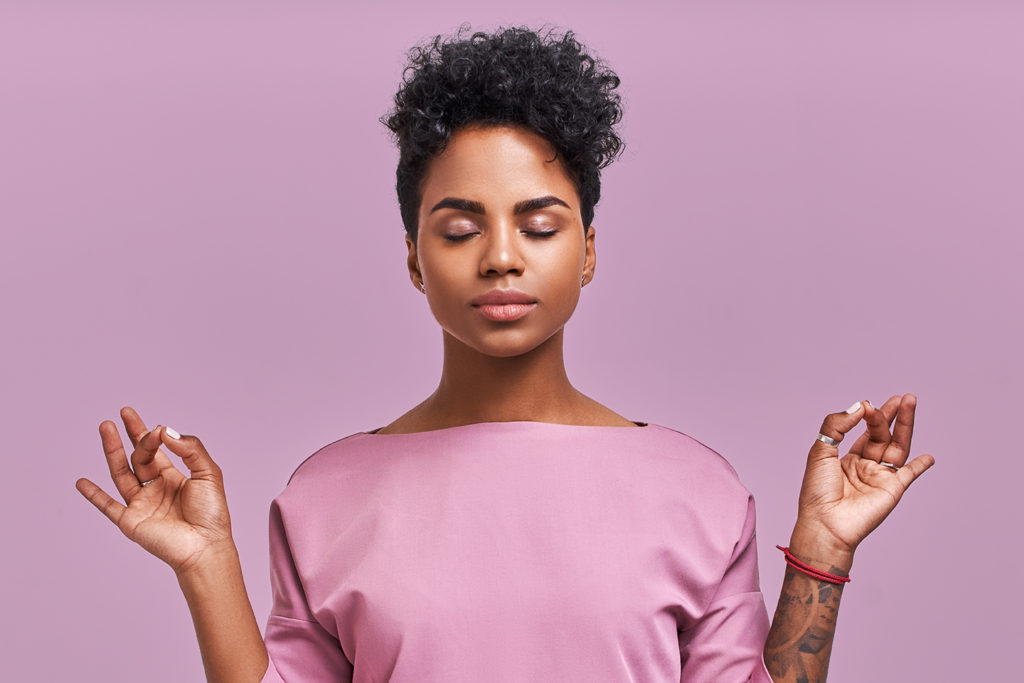Can You Eliminate Anxiety Without Medication?
By Connie Porazka, MBSR with Lisa Sparks
 When I tell people I teach mindfulness for a living, the first thing they often share with me is the anxiety in their lives. Anxiety is a form of stress that appears to have an overarching presence in today’s society.
When I tell people I teach mindfulness for a living, the first thing they often share with me is the anxiety in their lives. Anxiety is a form of stress that appears to have an overarching presence in today’s society.
To give you a little background, research suggests that the amygdala, which is located in the center of our brain, developed the anxiety response to external stimuli as a means of survival. Prehistoric cavemen developed an entire region in their brains dedicated to keeping them alive in the midst of daily life-threatening scenarios. It worked. A little too well, it seems.
Flash forward to present times, while our brain is still wired to run away from dinosaurs, it often interprets signals (such as our phones beeping, emails coming in at a pace we can’t keep up with, or a hostile Facebook post in our feed) as life-threatening stressors. So while a new text message may seem benign, or even something to get excited about, it’s just one more thing in our daily environment that can add to our modern anxieties.
This is where mindfulness comes in. Mindfulness has the ability to rewire our brains even in the face of stress. A regular practice of just 20 minutes a day of mindfulness has been shown to shrink the amount of grey matter associated with the amygdala in brain scans. Participants in mindfulness studies anecdotally report a measurable anxiety reduction when regularly practicing mindfulness.
In a 2013 study researchers from Stanford noted that there is a direct correlation between the size of the amygdala and the amount of anxiety people report suffering. Children who grew up in stressful home environments reportedly had larger amygdalae than those who grew up in nurturing homes.
This is where the magic of neuroplasticity, as it relates to mindfulness, comes in. Some of the latest research supports that mindfulness is a way to literally change your mind! Regardless of the traumas we experienced early in life, as we begin to practice mindfulness regularly, we can start to gain control over our anxieties.
The amygdala is associated with reactivity – it’s always on: interpreting and reacting to outside signals before our thinking brain has processed the event associated with the resulting anxiety. Mindfulness is spaciousness between the responsive thinking brain and the reactive reptile brain our ancestors passed down to us.
Dr. Melanie Greenberg sums it up nicely in an online article: Think of mindfulness for stress and anxiety as both an attitude toward living and a resilient brain skill that reduces your amygdala’s reactivity. Jon Kabat-Zinn defines mindfulness practice as a way of paying attention purposefully and with nonjudgmental acceptance to your present-moment experience. When you practice adopting the stance of mindfulness for anxiety and stress toward your own experience in the moment, whatever that may be, you open up the space to sit peacefully with and examine your thoughts, feelings, or body sensations, rather than following your amygdala’s instructions to run away, be overwhelmed, or react impulsively.
So how do we introduce mindfulness to our anxiety? Many first time practitioners of mindfulness report that when they finally sit down to try it, many of their anxieties come to the forefront of their thoughts. This can initially seem counterproductive. We must give ourselves permission to realize that we may not be able to rid our minds completely of the anxious thoughts coming up during meditation. In fact, being aware of the anxious thoughts and feelings means we’re doing it right!
It’s important to coach new practitioners in what to expect when they begin mindfulness meditation. It is normal for everything to catch up with you the second you sit still long enough for it to find you. The first weeks and months of mindfulness meditation allow thoughts and feelings to arise, and create the space needed to observe those thoughts and acknowledge those feelings without judgment.
Much of our anxiety arises from being constantly exposed to the highlight reels of the lives of others we witness in social media. It’s easy to compare your everyday life to that and wonder if you are enough. Just searching online for a basic need leads to sidebar advertising of bigger and better suggestions generated by your search engine’s algorithm. Screen-time has procured a permanent place in our society, and with it come new forms of anxiety we hadn’t anticipated.
And so, mindfulness is a natural equal and opposite reaction to combat this. Ironically, it is our screens that are delivering our mindfulness tools through popular apps such as Calm. But this is a good thing. If you have access to a screen, you have access to mindfulness.
So, exciting news: once the awareness is achieved, the real work can begin. It is through our awareness that we can offer compassion to our anxiety. Anxiety means we care, but by placing our focus on self-compassion and non-judgment, we can begin to alleviate our anxiousness. Meditation becomes not only something we look forward to in our day, but it also becomes something we can’t effectively live without. Mindfulness is a tool accessible to each and every one of us.
Connie Porazka has dedicated her career to gaining face time with those new to mindfulness and fostering the benefits of mindfulness in the lives of others. Through Retreat to Joy, she teaches mindfulness workshops and seminars, as well as an 8-week MBSR (Mindfulness-Based Stress Reduction) course. For more information, please visit retreattojoy.com and follow us on social media: facebook.com/retreattojoy.





